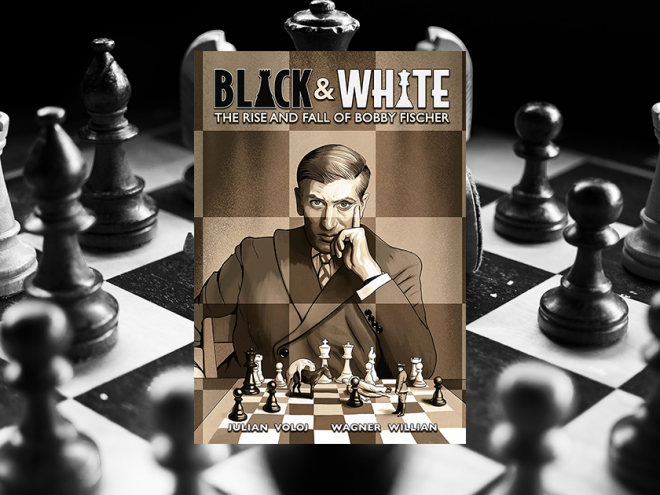Earlier this week, Julian Voloj wrote about the story behind Ghetto Brother and the continuing legacy of Jews in comics. He is blogging here all week as part of the Visiting Scribe series on The ProsenPeople.
In a recent interview, I was recently asked how I would define Ghetto Brother. My answer was “a fictionalized biographic comic.”
Biographical comics are increasingly popular, and Harvey Peckar mastered this genre with his American Splendor series, which debuted in 1976. Seth Kushner’s Schmuck, a new graphic novel anthology, stands in this tradition.
Originally a web series on TripCity, Schmuck is the “semi autobio comix neurotic” story of Kusher’s alter ego Adam Kessler, “a pop-culture obsessed photographer torn between pleasing Mom by finding a nice Jewish girl, and figuring out what he really wants.”
The Yiddish word “schmuck” refers to an obnoxious person, but everyone who ever met Kushner will attest that he was anything but. I personally first encountered this very talented artist when he shot the Beastie Boys for Heeb. Known primarily as a portrait photographer, he published The Brooklynites, an homage to his home borough, in 2007. Kushner’s passion was comics, and a year later, he started a series of portraits of cartoonists, later called Graphic NYC (with writer Christopher Irving) and published in 2012 as Leaping Tall Buildings: The Origins of American Comics.
I met Kusher around that time when writing about the book for the Swiss weekly tachles, for which I also wrote about Benjamin Melendez. We stayed in touch and, both of us being photographers with a passion for comics, showed mutual appreciation for each other’s work. My personal favorite was Culture Pop, a series combining both Kushner’s passions with fumetti (photo-comics).
 Kushner started Schmuck in 2012, commissioning different artists to illustrate funny little “schmuck” episodes. The series ends— spoiler alert — with Kessler finding his bashert, or soul mate — in real life, his wife Terra. (The two had a son, Jackson.)
Kushner started Schmuck in 2012, commissioning different artists to illustrate funny little “schmuck” episodes. The series ends— spoiler alert — with Kessler finding his bashert, or soul mate — in real life, his wife Terra. (The two had a son, Jackson.)
In 2014, Kushner launched a successful Kickstarter campaign for the graphic novel, but unfortunately was shortly afterwards diagnosed with cancer. Kushner documented his battle with leukemia on social media, and his story was ready for a happy ending when he was released from the hospital nearly a year later. In May, shortly after Ghetto Brother was released, we were chatting about the book and making plans to meet. A week later, sadly, Kushner passed away.
Seth Kushner was a brilliant photographer and writer, and a real mensch.
Born in Germany to Colombian parents, Julian Voloj is used to living in between worlds. In his work, the grandson of Shoah survivors explores questions of Jewish identity and heritage.
Related Content:
- Matthew Baigell: We’re Living in a Golden Age of Jewish American Art and Don’t Really Know It
- Josh Lambert: Is “Schmuck” a Dirty Word?
- Slash Coleman: 10 Ways to Win Big Like a Bohemian at Sports, Love, and Life
Julian Voloj is a New York – based writer whose work has been published in the New York Times, Rolling Stone, the Washington Post, and many other national and international publications. Born to Colombian parents in Germany, where he studied literature and linguistics, Voloj moved to New York in 2004. His fascination for forgotten heroes and hidden figures stems from his own family history and has been a leitmotif in his nonfiction graphic novels.



